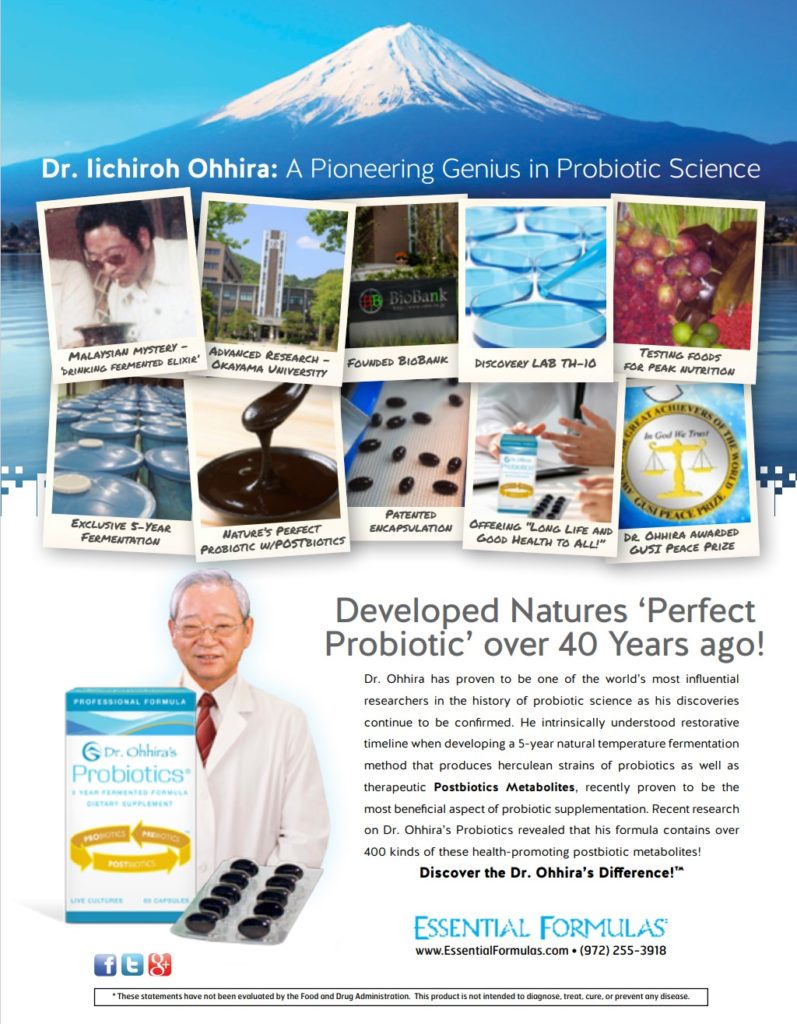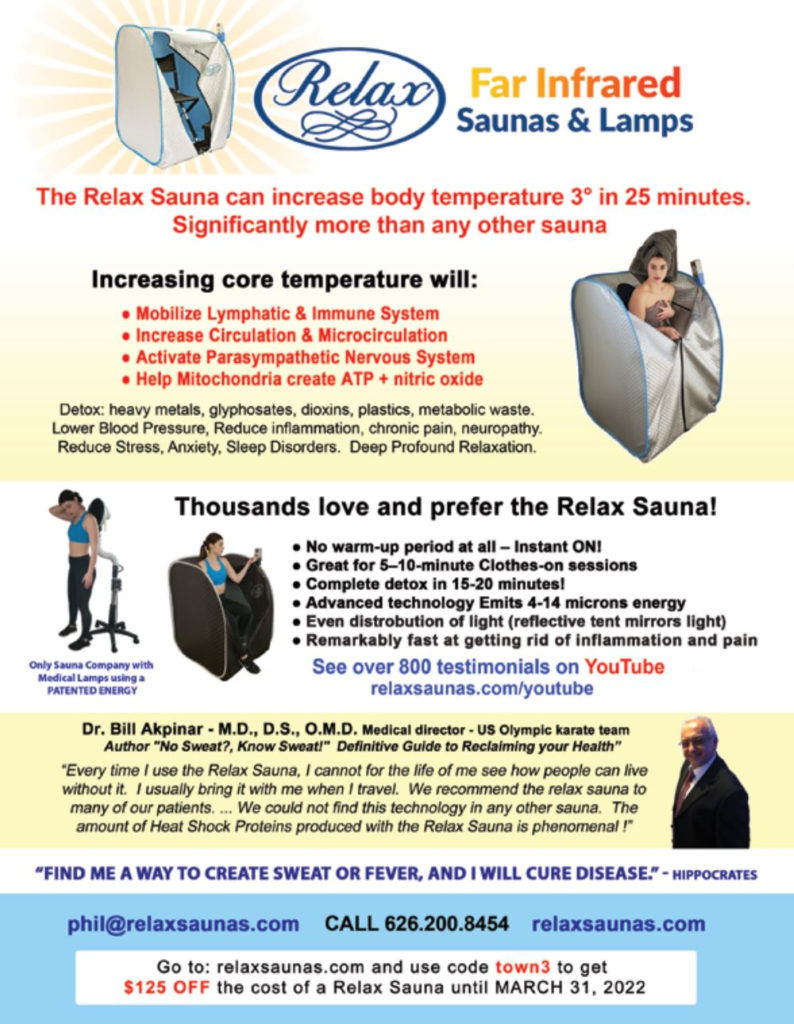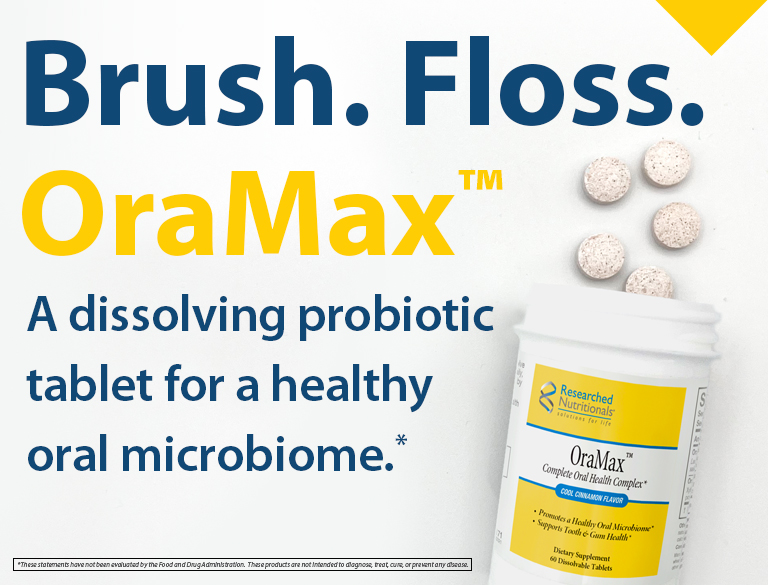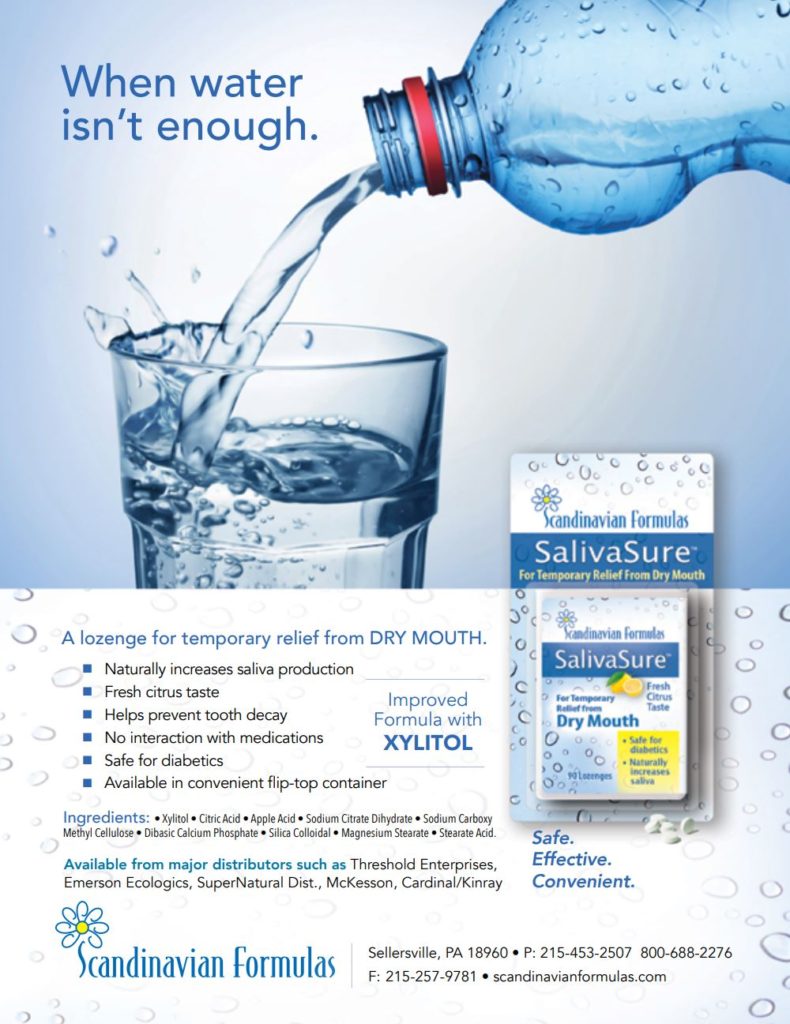Bastyr University San Diego Clinic: Student Case Reports
Fourth-year interns at Bastyr University are actively developing their clinical skills through treating patients at the school’s clinic. They engage their didactic skills in rigorous case taking, examinations, evaluation, and a naturopathic-focused treatment plan under the supervision of their attending doctor. The interns are able to gain experience in areas such as mental health, mind-body medicine, oncology, hydrotherapy, physical medicine, out-reach community care, IV treatment, biofeedback, and so on. Each one of these opportunities presents a prime opportunity for the students to enrich their knowledge about conditions and approaches to care. In efforts to salient their understanding, the students write case reports under the supervision of Dr. Baljit Khamba in their course “Advanced Case Studies.” By completing these reports, future practitioners gain a valuable skill that they can then utilize once they graduate.
by Anna Feagan
edited by Baljit Khamba, ND, MPH
Abstract
Gastroesophageal reflux disease continues to be a growing health concern in the Western world. The physiological mechanisms behind the etiology of the disease and their relationship to other pathologies have been debated for decades. The purpose of this case report is to evaluate the current knowledge on the most common mechanism of gastroesophageal reflux disease and how it pertains to treatment. It aims to explore the literature, or lack of literature, that supports popular natural treatment options for this disease and discusses potential dangers of conventional standards of treatment. The goal of this literature review is to relate the findings on current literature surrounding GERD to a specific case.
It is the current consensus that a transient lower esophageal sphincter (LES) is the main physiological defect contributing to acid reflux.1 This is particularly significant for patients with hiatal hernias, as this pathology has been found to decrease the pressure in the LES. The relationship between hiatal hernia and GERD will be discussed further throughout this report. Given this research on the etiology of GERD, treatments that aim to soothe tissues, such as demulcents, and treatments that target a decrease in acid production are mostly palliative and work to prevent further tissue damage. Curative treatment should be targeted at strengthening the integrity of the LES and this report discusses treatments that are thought to do so, particularly the herb Fumaria officinalis.

Introduction
Proton pump inhibitors are a main choice for the treatment of gastroesophageal reflux disease and continue to be one of the most prescribed drugs in the United States. It is estimated that 44% of Americans experience GERD symptoms at least once per month with 20% experiencing them as much as once per week.2 While this drug is indicated for short term use in the treatment of GERD, evidence shows that chronic use with no documented clinical indication is prevalent.3 Although PPI’s are considered to be safe and relatively well tolerated, they are associated with several adverse outcomes. These include diarrhea, impaired B12 absorption, and hypomagnesemia. Increased risk of developing Clostridium difficle infection, hip fractures, and pneumonia is a concern in older patients taking PPI’s as well.3 After four to eight weeks of PPI therapy, in the absence of Barrett’s esophagitis or erosive esophagitis, the use of this medication should be reassessed. Lowering the dosage of PPI and discontinuing the medication while switching to on-demand use are equally effective methods of tapering and the choice should be based on patient preference.3
In many patient populations, especially the elderly, there is a need for alternative therapy for GERD since the risks of PPI use are increased. Considering the known mechanisms underlying GERD, there are several natural therapeutic options that offer promising choices for the management of this disease and pose little to no additional health risks. Aloe vera gel, in particular, has been shown to have anti-ulcer, wound healing, and anti-microbial effects, all of which are of particular interest in treating GERD.2 There has been little research on the efficacy of natural therapies such as Aloe vera in the treatment of GERD, though the few evaluations have shown promising results. Aloe vera, in particular, has shown efficacy in comparison to both PPI therapy and histamine receptor antagonists in pilot studies. With no adverse side effects, Aloe vera gel is a potentially safer long-term option for the management of reflux.
 In addition to Aloe vera gel as a potential natural therapy for the treatment of many of the consequential pathologies of GERD (ulcerations, esophagitis, infection, experience of burning sensation), there is also a need for therapies that are more targeted toward treating the actual cause of GERD. Symptoms of GERD tend to occur when there is an imbalance between defensive and aggressive factors in the gastric system. Defensive factors are the gastroesophageal junction (including the lower esophageal sphincter), resistance to tissue damage, and acid clearance. Aggressive factors include acid secretion and impaired digestion (i.e. delayed gastric emptying). Since the LES is the first barrier between stomach acid and the esophagus, problems in this region are the source of GERD often. The LES is the distal 3-4 cm of the esophagus and is considered to be the primary reflux barrier. This region is tonically contracted at rest and maintains its tone intrinsically by the integrity of the muscle itself and extrinsically by cholinergic innervation.1 There is significant variability in the tone of this region with it being lowest after meals to allow the entry of food and highest at night. If gastroesophageal incompetence is the source of reflux, there are three main reasons this could be happening. The first, and most common mechanism in cases of mild GERD, is that the LES is transiently relaxing. The other two mechanisms which tend to have a more severe presentation of disease state include a hypotensive LES and anatomical defect such as hiatal hernia.1
In addition to Aloe vera gel as a potential natural therapy for the treatment of many of the consequential pathologies of GERD (ulcerations, esophagitis, infection, experience of burning sensation), there is also a need for therapies that are more targeted toward treating the actual cause of GERD. Symptoms of GERD tend to occur when there is an imbalance between defensive and aggressive factors in the gastric system. Defensive factors are the gastroesophageal junction (including the lower esophageal sphincter), resistance to tissue damage, and acid clearance. Aggressive factors include acid secretion and impaired digestion (i.e. delayed gastric emptying). Since the LES is the first barrier between stomach acid and the esophagus, problems in this region are the source of GERD often. The LES is the distal 3-4 cm of the esophagus and is considered to be the primary reflux barrier. This region is tonically contracted at rest and maintains its tone intrinsically by the integrity of the muscle itself and extrinsically by cholinergic innervation.1 There is significant variability in the tone of this region with it being lowest after meals to allow the entry of food and highest at night. If gastroesophageal incompetence is the source of reflux, there are three main reasons this could be happening. The first, and most common mechanism in cases of mild GERD, is that the LES is transiently relaxing. The other two mechanisms which tend to have a more severe presentation of disease state include a hypotensive LES and anatomical defect such as hiatal hernia.1
 The relationship between the hiatal hernia and LES is of particular interest in cases of GERD considering the high association between the anatomical defect and disease. Studies have shown that over half of patients in Western countries that have reflux esophagitis also have hiatal hernias.1 Normally the LES and crural diaphragm are superimposed, and the tone of the LES with the extrinsic pressure from the crural diaphragm create a resting LES pressure that is between 10-45 mmHg. This pressure is compromised in the case of hiatal hernias as the defect causes the LES to be proximally displaced.1 The knowledge of this relationship between LES pressure and hiatal hernias in congruence with the knowledge of the importance of the LES in controlling reflux leads to the logical treatment for GERD being focused on improving the integrity of the LES. Certain botanicals including Atropa Belladonna and Fumaria officinalis have shown efficacy in regulating spasmodic muscle issues in the gastrointestinal system and therefore show promise in use for the treatment of compromised LES integrity leading to GERD.4
The relationship between the hiatal hernia and LES is of particular interest in cases of GERD considering the high association between the anatomical defect and disease. Studies have shown that over half of patients in Western countries that have reflux esophagitis also have hiatal hernias.1 Normally the LES and crural diaphragm are superimposed, and the tone of the LES with the extrinsic pressure from the crural diaphragm create a resting LES pressure that is between 10-45 mmHg. This pressure is compromised in the case of hiatal hernias as the defect causes the LES to be proximally displaced.1 The knowledge of this relationship between LES pressure and hiatal hernias in congruence with the knowledge of the importance of the LES in controlling reflux leads to the logical treatment for GERD being focused on improving the integrity of the LES. Certain botanicals including Atropa Belladonna and Fumaria officinalis have shown efficacy in regulating spasmodic muscle issues in the gastrointestinal system and therefore show promise in use for the treatment of compromised LES integrity leading to GERD.4
Case Description
The patient in this case is based upon is a seventy-five-year-old Caucasian male. He originally presented to clinic with a chief complaint of tingling sensation in his lips and an ulceration in his mouth. Under his year of care at the Bastyr University Clinic, California, reflux has been an ongoing complaint. He experiences a non-radiating burning sensation in his chest and throat that is worse when he lays down to sleep at night. He does not notice any increase of symptoms in relation to meals. Under the care of BUC, he has been recommended many different therapies. Mainly, apple cider vinegar, demulcents such as Althea officinalis, aloe vera gel, and de-glyccerinated licorice, and bitters such as Gentian. The patient is seeking natural care for his reflux because he has been taking proton pump inhibitors for over twenty years and would like to taper off of this medication.
His past medical information reveals an ongoing history of GERD and related pathologies. Imaging esophagogastroduodenoscopy (EGD) from 2010 and 2014 revealed a 5 cm hiatal hernia and an area at 34 cm of suspected Barrett’s esophagitis. His most recent EGD, in April 2017, revealed no suspicion of Barrett’s but a 7 cm hiatal hernia and distal esophageal ulcerations at 28-31 cm. DEXA imaging of his hips in April 2017 has revealed a T score of -3.3 of his right hip, giving him the diagnosis of osteoporosis. His most recent CBC revealed a pernicious anemia as his mean corpuscular volume was elevated at 95.1 L. Other ongoing concerns for this patient include gout and lower back pain, for which he is being managed at BUC on a physical medicine shift.
 A review of systems was completed during his first visit with me to rule out any serious complications and differentials of his conditions. He reports no cardiac signs or symptoms and no muscle weakness or tingling, although the tingling sensation on his lip is still present periodically. He did, however, report that he has been experiencing a cough and some difficulty breathing for the past two or three years. The cough produces a small amount of clear sputum in the morning but persists throughout the day. A physical examination reveals a red and enlarged tongue, lungs that are clear to auscultation with normal breathing rhythm and slightly decreased rate, regular rate and rhythm of the heart with no murmurs, gallops, rubs or abnormal heart sounds, and intact deep tendon reflexes.
A review of systems was completed during his first visit with me to rule out any serious complications and differentials of his conditions. He reports no cardiac signs or symptoms and no muscle weakness or tingling, although the tingling sensation on his lip is still present periodically. He did, however, report that he has been experiencing a cough and some difficulty breathing for the past two or three years. The cough produces a small amount of clear sputum in the morning but persists throughout the day. A physical examination reveals a red and enlarged tongue, lungs that are clear to auscultation with normal breathing rhythm and slightly decreased rate, regular rate and rhythm of the heart with no murmurs, gallops, rubs or abnormal heart sounds, and intact deep tendon reflexes.
Given the patient’s most recent imaging revealing a hiatal hernia with esophageal ulcerations in concurrence with his primary symptom complaint of burning sensation in the chest, a primary diagnosis of hiatal hernia with GERD and esophagitis was made. In addition, his most recent complete blood count revealed low MCV, indicating a diagnosis of macrocytic anemia while his DEXA scan revealed a diagnosis of osteoporosis. Treatment of his condition involved removing redundant therapies that are not addressing the cause of his symptoms, which is a hypotonic LES due to hiatal hernia. This led to the discontinuation of DGL, Althaea officinalis, gentian, and apple cider vinegar. The addition of Fumaria officinalis, five droppers full three times per day was made and he was instructed to continue the use of aloe vera gel prior to meals. Follow up with the patient two weeks later revealed no symptoms since beginning this new therapy despite the continuation of tapering his PPI medication.
Discussion
Gastroesophageal reflux disease is typically diagnosed on clinical symptoms alone. Further diagnostic tools such as endoscopies are invasive and are not typically necessary to diagnose GERD, especially if it is not complicated. According to the American Gastroenterological Association, endoscopy with biopsy should only be performed on patients with GERD if they have a troublesome dysphagia, suspected GERD related esophageal syndromes, or have not responded to PPI therapy.5 Esophagitis is one of the most common complications of GERD, and the Los Angeles classification is the most widely used grading system to assess it. This system grades the lesions based on number, size, and level of involvement of the luminal circumference. Further complications that may result from GERD include esophageal ulceration, laryngeal irritation resulting in chronic cough, teeth erosion, and Barrett’s esophagitis. Barrett’s esophagitis is considered a more serious complication, happening in about 10% of patients with chronic GERD with under 1% of those patients developing adenocarcinoma.5
 In this particular case, diagnosis was made using a combination of symptoms and imaging. The most recent imaging report indicated an endoscopy that showed small esophageal ulcerations and a hiatal hernia. In conjunction with the patient’s self-report of burning sensation in the chest and throat, a diagnosis of GERD with esophagitis and hiatal hernia was made. Considering the association between decreased B12 absorption and PPI use, together with macrocytic anemia findings on his CBC and the physical exam findings of enlarged tongue and lip tingling, it is likely this patient also has a B12 deficiency. Other conditions, such as chronic cough, that the patient displayed may also be related to his chronic reflux as laryngeal irritation from the acid can lead to this condition. Additionally, osteoporosis is a condition associated with chronic PPI use that the patient also has, as indicated on his most recent DEXA scan.
In this particular case, diagnosis was made using a combination of symptoms and imaging. The most recent imaging report indicated an endoscopy that showed small esophageal ulcerations and a hiatal hernia. In conjunction with the patient’s self-report of burning sensation in the chest and throat, a diagnosis of GERD with esophagitis and hiatal hernia was made. Considering the association between decreased B12 absorption and PPI use, together with macrocytic anemia findings on his CBC and the physical exam findings of enlarged tongue and lip tingling, it is likely this patient also has a B12 deficiency. Other conditions, such as chronic cough, that the patient displayed may also be related to his chronic reflux as laryngeal irritation from the acid can lead to this condition. Additionally, osteoporosis is a condition associated with chronic PPI use that the patient also has, as indicated on his most recent DEXA scan.
Although GERD is usually considered a benign condition, treatment can prevent the more complicated conditions previously discussed. Inhibiting acid production is the main allopathic treatment modality and is accomplished using four to eight weeks of therapy with a proton pump inhibitor. PPI’s have demonstrated excellent efficacy in the treatment of GERD, with a 90% healing rate in erosive esophagitis and an 80% healing rate in Barrett’s esophagitis.6 In non-erosive reflux, PPI therapy has been shown to have 50-65% healing rates, which is the highest among all pharmaceutical anti-reflux therapies.
 Studies demonstrating the efficacy of herbal demulcents in treating reflux and preventing further complications of GERD are not as prevalent as pharmaceutical therapies; however, aloe vera gel has shown efficacy and indication in several trials. In one study this species was shown to reduce gastric juice, acid and pepsin, and inhibit acute gastric lesions in rats.2 Other studies have shown reduced TNF-alpha as well as reduced gastric inflammation and ulcer size, with protective effects being comparable to the drug sucralfate. Aloe vera has also demonstrated efficacy in treating other gastric conditions such as H. pylori. In comparison to PPI therapy and H2R antagonists in the treatment of GERD symptoms, aloe vera gel is comparable in efficacy.2 Aloe vera is a promising medication as both a supplement in the conventional treatment of GERD and as mono therapy for symptom management. However, additional studies that directly compare this therapy to conventional management are needed. In addition, studies on the use of aloe vera gel in conjunction with as needed pharmaceutical intervention are non-existent and could be extremely useful in reducing the number of individuals on chronic PPI therapy.
Studies demonstrating the efficacy of herbal demulcents in treating reflux and preventing further complications of GERD are not as prevalent as pharmaceutical therapies; however, aloe vera gel has shown efficacy and indication in several trials. In one study this species was shown to reduce gastric juice, acid and pepsin, and inhibit acute gastric lesions in rats.2 Other studies have shown reduced TNF-alpha as well as reduced gastric inflammation and ulcer size, with protective effects being comparable to the drug sucralfate. Aloe vera has also demonstrated efficacy in treating other gastric conditions such as H. pylori. In comparison to PPI therapy and H2R antagonists in the treatment of GERD symptoms, aloe vera gel is comparable in efficacy.2 Aloe vera is a promising medication as both a supplement in the conventional treatment of GERD and as mono therapy for symptom management. However, additional studies that directly compare this therapy to conventional management are needed. In addition, studies on the use of aloe vera gel in conjunction with as needed pharmaceutical intervention are non-existent and could be extremely useful in reducing the number of individuals on chronic PPI therapy.
As previously discussed, there is a need for therapies that are directed at the actual cause of GERD, which is transient LES. None of the common pharmaceuticals used in the treatment of GERD have mechanisms of action that address this issue. However, certain anti-spasmolytic herbs have demonstrated ability to regulate the pressure in the LES and thus improve symptoms of GERD. In particular, has incidentally shown to improve symptoms of GERD while being used to treat gallbladder spasms.4 The efficacy of this treatment is incidental, and more studies need to be done that directly investigate the effect of Fumaria on the LES. However, with a lack of other treatment modalities, and the overall safety of this herb, it can be considered as a liable treatment in concurrence with other medications.
In regard to examining the treatment of this particular case report of GERD, there are several inherent limitations. The most prevalent one being the limitation on time and follow up with the patient. As the primary student clinician, I will only follow this patient for a 12-week period of time. This is insufficient to properly evaluate the efficacy of treatments and to follow up with post-treatment imaging. However, he had been seen at BUC for over one year during which time he had been treated with demulcent therapies (including aloe vera gel) as part of his GERD management. His endoscopy in April of 2017 did show some improvements in the amount of ulceration present in the esophagus from the previous imaging done in 2010. Additionally, in just two weeks of therapy with Fumaria the patient reported a resolution of symptoms, despite continuing to taper from his PPI medication. This has motivated me to continue this course of treatment with the hopes of absolving GERD complications such as esophagitis with the Aloe vera and to improve the integrity of the LES by adding the Fumaria. If his symptoms continue to dissipate, and considering his esophagitis is not classified as severe according to the small size of the ulcerations, he should be able to completely stop his PPI medication which is putting him at risk for developing other severe health complications.
Conclusion
The goal of this case report was to discuss the research on the etiology of GERD and how current treatments, both natural and synthetic, do or do not address this etiology and how these treatments have affected one particular case of GERD. Adverse side effects of PPI therapy has prompted need for natural therapies to address reflux, particularly when it is uncomplicated. Research on the efficacy of natural therapies in treating this disease is lacking, although preliminary investigations show promise. In the case of GERD discussed here, a hiatal hernia is present, indicating that lack of LES integrity is most likely the etiology of the symptoms. This has prompted a treatment approach that includes both strengthening the LES as well as protecting the esophagus from further inflammatory damage.
References
1. Hyun JJ, Bak Y-T. (2011). Clinical Significance of Hiatal Hernia. Gut and Liver. 2011;5(3):267–277.
2. Khedmat H, et al. Efficacy and safety of Aloe vera syrup for the treatment of gastroesophageal reflux disease. Journal of Traditional Chinese Medicine. 2015; 35(6): 632-6.
3. Farrell B, et al. Deprescribing Proton Pump Inhibitors: Evidence-based Clinical Practice Guidelines. Can Fam Physician. 2017 May;63(5):354-364.
4. Yarnell E, Abascal K. Spasmolytic Herbs. Alternative and Complementary Therapies. 2011; 17(3): 169-174.
5. Kahrilas P. Clinical manifestations and diagnosis of gastroesophageal reflux disease in adults. Up to Date. Retrieved August 7, 2017.
6. Dekel R, Morse C, Fass R. The role of proton pump inhibitors in gastro-oesophageal reflux disease. Drugs [serial online]. 2004;64(3):277-295.

The Townsend Letter supports alternative medicine research – help us help you!
 Fourth-year interns at Bastyr University are actively developing their clinical skills through treating patients at the school’s clinic. They engage their didactic skills in rigorous case taking, examinations, evaluation, and a naturopathic-focused treatment plan under the supervision of their attending doctor. The interns are able to gain experience in areas such as mental health, mind-body medicine, oncology, hydrotherapy, physical medicine, out-reach community care, IV treatment, biofeedback, and so on. Each one of these opportunities presents a prime opportunity for the students to enrich their knowledge about conditions and approaches to care. In efforts to salient their understanding, the students write case reports under the supervision of Dr. Baljit Khamba in their course “Advanced Case Studies.” By completing these reports, future practitioners gain a valuable skill that they can then utilize once they graduate.
Fourth-year interns at Bastyr University are actively developing their clinical skills through treating patients at the school’s clinic. They engage their didactic skills in rigorous case taking, examinations, evaluation, and a naturopathic-focused treatment plan under the supervision of their attending doctor. The interns are able to gain experience in areas such as mental health, mind-body medicine, oncology, hydrotherapy, physical medicine, out-reach community care, IV treatment, biofeedback, and so on. Each one of these opportunities presents a prime opportunity for the students to enrich their knowledge about conditions and approaches to care. In efforts to salient their understanding, the students write case reports under the supervision of Dr. Baljit Khamba in their course “Advanced Case Studies.” By completing these reports, future practitioners gain a valuable skill that they can then utilize once they graduate.




